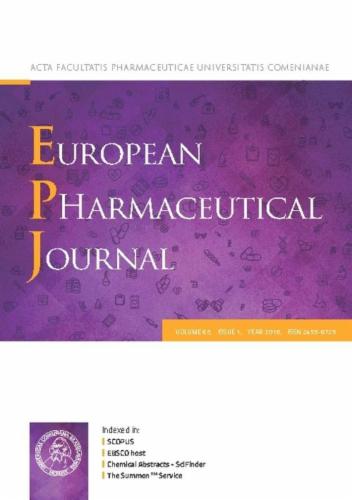甲氨酸连续生产试验——通过模拟和工艺优化设计试验
IF 4.7
3区 医学
Q1 PHARMACOLOGY & PHARMACY
引用次数: 0
摘要
在制药工业中,连续生产方法已被公认为与传统的批量生产相比提供了几个好处。这些好处包括增加灵活性,更高的产品产量,通过更好的监测技术增强质量保证,以及更一致的活性药物成分(api)分布。尽管有这些明显的优势,但缺乏对连续制造中多个子过程同时优化的研究。本研究探索了连续制药生产的优化过程,明确针对使用湿磨(WM)和混合悬浮液混合产物去除(MSMPR)生产甲氨酰胺。我们采用数据驱动的进化优化算法来解决这些多目标优化问题(MaOPs)。通过通用过程建模系统(gPROMS)生成的高保真模型生成数据随后被用于基于径向基函数神经网络(RBFNN)开发更简单的代理模型。这使得非常快速的模拟,适合与计算密集型机器学习算法一起使用。利用进化优化算法,这些模型用于基于模型的过程优化。使用一系列数字和视觉优化性能指标来评估MaOP方法的有效性。我们的研究结果强调了整合高保真度和替代模型的可行性,以辨别因变量(目标函数)和自变量(决策变量)之间的功能关系,为制药领域的流程优化提供了一个强大的框架。近似解平均比拉丁超立方体抽样得到的解好58%。所选择的最优解可以作为后续实验中参数设置的基础。这项工作的意义在于,首次展示了一个用于连续药品生产的多目标优化框架,该框架使用简单的代理模型,该模型来自使用机器学习的高保真模拟。本文章由计算机程序翻译,如有差异,请以英文原文为准。

Testing on continuous production of mefenamic acids—Design of experiment through simulation and process optimisation
In the pharmaceutical manufacturing industry, continuous production methods have been recognised as providing several benefits compared to traditional batch production. These benefits include increased flexibility, higher product output, enhanced quality assurance through better monitoring techniques, and more consistent distribution of Active Pharmaceutical Ingredients (APIs). Despite these clear advantages, there is a lack of research focused on the simultaneous optimisation of multiple sub-processes in continuous manufacturing. This study explores the optimisation processes of continuous pharmaceutical production, explicitly targeting the production of mefenamic acid using wet milling (WM) and mixed-suspension mixed-product removal (MSMPR). We employ data-driven evolutionary optimisation algorithms to address these many-objective optimisation problems (MaOPs). High-fidelity model-generated data generated via the General Process Modelling System (gPROMS) is subsequently utilised to develop simpler surrogate models based on the Radial Basis Function Neural Network (RBFNN). This enables very fast simulations, suitable for use with computationally intensive machine learning algorithms. Utilising evolutionary optimisation algorithms, these models are used for model-based process optimisation. The efficacy of the MaOP approach is evaluated using a range of numeric and visual optimisation performance indicators. Our findings underscore the viability of integrating high-fidelity and surrogate models to discern functional relationships between dependent variables (objective functions) and independent variables (decision variables), providing a robust framework for process optimisation within the pharmaceutical domain. The approximated solutions are, on average, 58% better than the solutions obtained from Latin hypercube sampling. The chosen optimal solutions can form the basis of parameter setting in upcoming experimental campaigns. The significance of this work is in the demonstration, for the first time, of a many-objective optimisation framework for continuous pharmaceuticals production using simple surrogate models derived from high fidelity simulations using Machine Learning.
求助全文
通过发布文献求助,成功后即可免费获取论文全文。
去求助
来源期刊
CiteScore
9.60
自引率
2.20%
发文量
248
审稿时长
50 days
期刊介绍:
The journal publishes research articles, review articles and scientific commentaries on all aspects of the pharmaceutical sciences with emphasis on conceptual novelty and scientific quality. The Editors welcome articles in this multidisciplinary field, with a focus on topics relevant for drug discovery and development.
More specifically, the Journal publishes reports on medicinal chemistry, pharmacology, drug absorption and metabolism, pharmacokinetics and pharmacodynamics, pharmaceutical and biomedical analysis, drug delivery (including gene delivery), drug targeting, pharmaceutical technology, pharmaceutical biotechnology and clinical drug evaluation. The journal will typically not give priority to manuscripts focusing primarily on organic synthesis, natural products, adaptation of analytical approaches, or discussions pertaining to drug policy making.
Scientific commentaries and review articles are generally by invitation only or by consent of the Editors. Proceedings of scientific meetings may be published as special issues or supplements to the Journal.

 求助内容:
求助内容: 应助结果提醒方式:
应助结果提醒方式:


